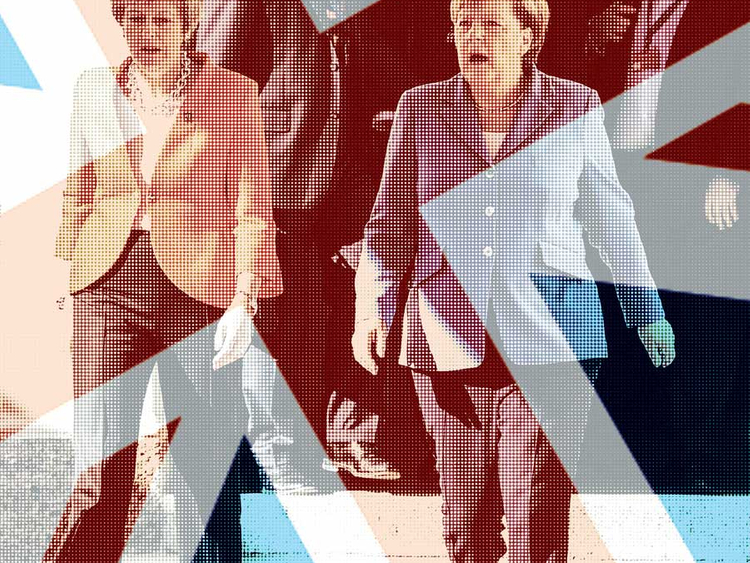British Prime Minister Theresa May is preparing for a wild week at the Conservative Party conference in Birmingham with Brexit on the menu. This follows the Labour conference, which overwhelmingly passed a statement to keep the option of a second referendum on the table, electrifying the United Kingdom exit debate.
The Labour resolution, which might ultimately be a vote on the terms of any eventual exit deal, rather than whether Britain should remain in the European Union (EU) per se, follows May’s humiliation by fellow European leaders in Salzburg. Then her ‘Chequers plan’ for Brexit was roundly criticised at the informal EU summit in Austria, a diplomatic disaster that has left May very vulnerable in Downing Street again, with critics who favour different EU exit outcomes growing in their defiance.
The intense UK political uncertainty, right now, has brought new drama to the traditional UK Autumn political conference season. In Liverpool last week, Brexit was a major topic of discussion at Labour’s event. This culminated last Tuesday with members supporting a resolution that “if we cannot get a general election, Labour must support all options remaining on the table, including campaigning for a public vote”.
This raises the political pressure, even higher, for May in Birmingham. Here she is under intense pressure from many Brexiteer critics — including former foreign secretary Boris Johnson — who want her to ditch Chequers and move instead towards a turbo-charged version of the free trade deal Canada agreed with the EU.
The political mess that May finds herself in comes at a moment when — under current timelines — there are only around six months to deliver on a final exit framework. The limited window offered by the two-year Article 50 process is why May wants a transition period to try to agree a framework for the future UK-EU relationship.
Yet, before the parameters of a newly defined UK-EU relationship can be secured, there are huge issues not resolved in the divorce discussions. This includes the future of the Irish border, which remains a vexed issue with no clear solution in sight.
Even with goodwill from both sides, it is therefore now uncertain whether even a fudged exit deal can be secured. Partly, this is because such an agreement would need ratification in the UK parliament, which could be an insurmountable undertaking for May.
With fears growing in Brussels about the slow pace of exit negotiations there is even growing speculation within the EU-27 about whether the UK’s formal leaving date may be postponed from March. If the two sides fail to reach an exit deal by Spring, many presume Britain would crash out of the Brussels-based club without any transition.
Yet, there are different scenarios here. This includes the possibility of extending Article 50 to allow more time for negotiations to take place.
There have also been media reports in recent weeks that May is set to ask the EU for an additional number of years of Brexit transition post-March. Under the deal provisionally agreed, the United Kingdom is already set for a 20-month transition period from March to December 2020 if London and Brussels resolve all divorce matters beforehand.
However, this less than two-year transition could — in practice — not be nearly long enough. Not just because of the need to prepare and implement new systems, including potentially for migration and customs. But also because any final, complex future UK-EU framework may not be ratified (and possibly not even be even concluded) by all the European national parliaments and assemblies in that time frame.
Some politicians, including in Ireland, have therefore proposed a five-year transition period from March 2019. Yet, neither London nor Brussels are prepared to talk openly about this possibility, for now.
Part of the reason is that the EU-27 have yet to agree to any budget from 2021 onwards. This explains why the transition length proposed in negotiations by Brussels would be until end-2020. EU negotiators are well aware that any talk over a period lasting beyond this point would be shrouded in additional uncertainty.
The reluctance of Brussels to highlight this dovetails with May not wanting to raise a longer transition now either as many Brexiteers are opposed to making significant, ongoing payments to the EU. And she is, anyway, simply too politically weak to face these hardliners in her party down on this issue.
Yet, kicking this transition length issue down the line could ultimately cause even bigger headaches, potentially even threatening any final Brexit settlement. This is because it may mean any transition that finishes at end-2020 would need to be extended, which could be politically toxic for London and Brussels alike.
The stakes in play in securing solutions are therefore big and growing for all parties. At this critical time for Europe, delivering a smooth Brexit increasingly needs high level statesmanship and diplomatic ingenuity so all parties can move towards a new constructive partnership into the 2020s.
Andrew Hammond is an associate at LSE IDEAS at the London School of Economics.












